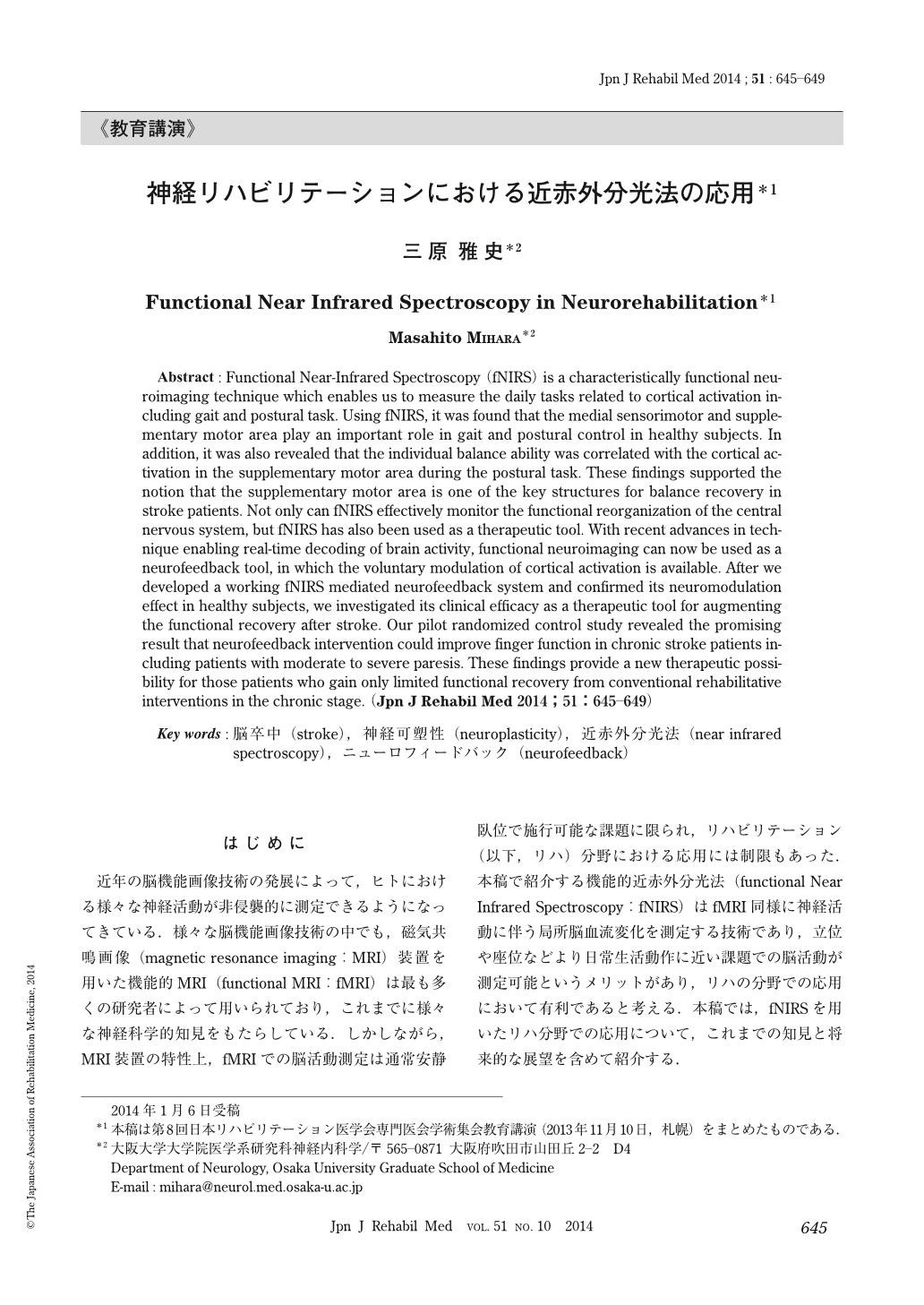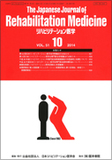Japanese
English
- 販売していません
- Abstract 文献概要
- 1ページ目 Look Inside
- 参考文献 Reference
はじめに
近年の脳機能画像技術の発展によって,ヒトにおける様々な神経活動が非侵襲的に測定できるようになってきている.様々な脳機能画像技術の中でも,磁気共鳴画像(magnetic resonance imaging:MRI)装置を用いた機能的MRI(functional MRI:fMRI)は最も多くの研究者によって用いられており,これまでに様々な神経科学的知見をもたらしている.しかしながら,MRI装置の特性上,fMRIでの脳活動測定は通常安静臥位で施行可能な課題に限られ,リハビリテーション(以下,リハ)分野における応用には制限もあった.本稿で紹介する機能的近赤外分光法(functional Near Infrared Spectroscopy:fNIRS)はfMRI同様に神経活動に伴う局所脳血流変化を測定する技術であり,立位や座位などより日常生活動作に近い課題での脳活動が測定可能というメリットがあり,リハの分野での応用において有利であると考える.本稿では,fNIRSを用いたリハ分野での応用について,これまでの知見と将来的な展望を含めて紹介する.
Abstract : Functional Near-Infrared Spectroscopy (fNIRS) is a characteristically functional neuroimaging technique which enables us to measure the daily tasks related to cortical activation including gait and postural task. Using fNIRS, it was found that the medial sensorimotor and supplementary motor area play an important role in gait and postural control in healthy subjects. In addition, it was also revealed that the individual balance ability was correlated with the cortical activation in the supplementary motor area during the postural task. These findings supported the notion that the supplementary motor area is one of the key structures for balance recovery in stroke patients. Not only can fNIRS effectively monitor the functional reorganization of the central nervous system, but fNIRS has also been used as a therapeutic tool. With recent advances in technique enabling real-time decoding of brain activity, functional neuroimaging can now be used as a neurofeedback tool, in which the voluntary modulation of cortical activation is available. After we developed a working fNIRS mediated neurofeedback system and confirmed its neuromodulation effect in healthy subjects, we investigated its clinical efficacy as a therapeutic tool for augmenting the functional recovery after stroke. Our pilot randomized control study revealed the promising result that neurofeedback intervention could improve finger function in chronic stroke patients including patients with moderate to severe paresis. These findings provide a new therapeutic possibility for those patients who gain only limited functional recovery from conventional rehabilitative interventions in the chronic stage.

Copyright © 2014, The Japanese Association of Rehabilitation Medicine. All rights reserved.


